![]()
![]()
![]()
Use LEFT and RIGHT arrow keys to navigate between flashcards;
Use UP and DOWN arrow keys to flip the card;
H to show hint;
A reads text to speech;
29 Cards in this Set
- Front
- Back
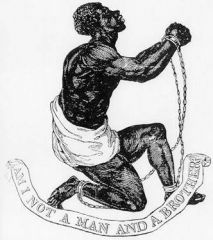
Abolitionist
|
Someone who wanted to ban or abolish slavery in the United States. Less than 1% of the people in the North wanted to abolish slavery when the Civil War broke out.
|
|
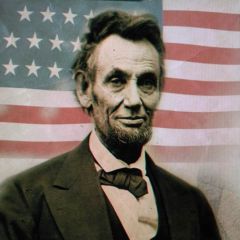
Abraham Lincoln
|
In 1860, he became President of the United States when the Civil War broke out. He signed the Emancipation Proclamation, which stated that if the South did not stop fighting within 90 days the enslaved people in that part of the South that were controlled by the Confederacy would be freed. This did not put an end to slavery.
|
|
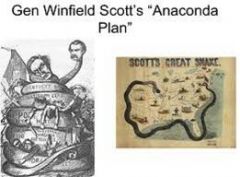
Anaconda Plan
|
This was the Union’s (North’s) plan to surround and crush the Confederate (South’s) rebellion.
|
|
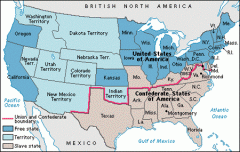
Border States and why are they important
|
Slave states that did not secede (or leave) the Union.
They were: Maryland, Delaware, Missouri, and Kentucky. If they had seceded Washington DC would be surrounded by by Confederates, and there would be a much better chance the South would be successful in the rebellion. |
|

Bull Run/Manassas
|
It was the first major battle of the Civil War.
Southern troops defeated a large Union force. It showed that the war would be a long and bloody battle. It also showed that many of the generals in the North were incompetent. |
|
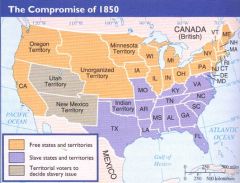
Compromise of 1850
|
This compromise would try to settle the slavery question. The compromise allowed California to become a free state (thus giving the North control of the Senate), it continued Popular Sovereignty, and it included a strict fugitive slave law (which required the people in the North to catch run-away slaves).
|
|
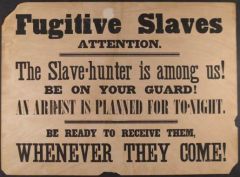
The Fugitive Slave Act
|
This was a law that was passed that the North MUST capture and return the slaves back to their owners any slave that escaped from the South. Now the people in North was directly involved in slavery. Harriet Beecher Stowe's book "Uncle Tom's Cabin" had just come out and it showed the North how cruel slavery was.
|
|
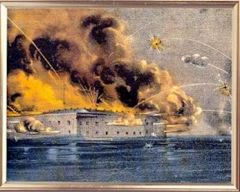
Fort Sumter
|
Located in Charleston South Carolina.
Union troops occupied a fort in the harbor It was attacked by Southern troops. This is where the first shots of the Civil War occurred |
|
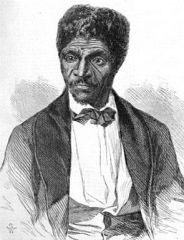
Dred Scott Decision
|
This was a U.S. Supreme Court ruling that said blacks could NOT be citizens and that they had no rights. It also said that slavery could not be banned in the territory - could it even be banned in the states?
|
|
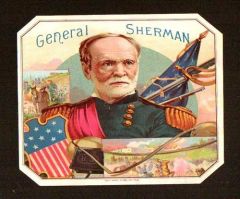
General William T. Sherman
|
Was a general in the Union Army. (The North)
He developed the concept of "total war" and led a very successful fight to “break the back” of the Confederates. His March to the Sea destroyed the South ability and will to continue the Civil War. Many southern soldier s deserted to go home and take care of their families. |
|
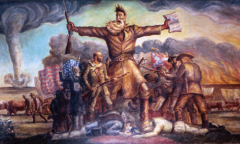
John Brown
|
He was an abolitionist who murdered some pro-slavery people in Kansas. Brown and his sons. He also tried to start a slave revolt by taking over the Federal Armory in Harper's Ferry, VA. He was hung and his death was glorified in the North. This REALLY upset the South.
|
|
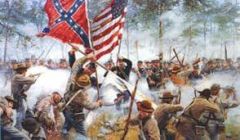
Battle of Gettysburg
|
This 3 day battle took place in Gettysburg, PA and was the bloodiest battle in the Civil War. There were over 50,000 casualties.
|
|
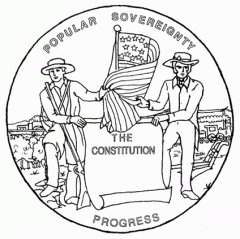
Popular Sovereignty
|
This was the idea where the voters in a territory decided whether or not slavery would be allowed in that new state.
|
|
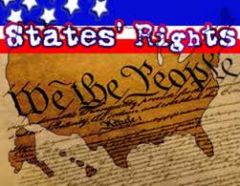
States Rights
|
States can now make their own laws.
Each state government is responsible for the people in that state only. The states can come or leave the United States as they see fit. |
|
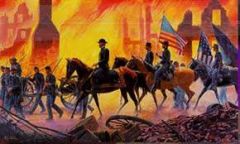
Total War
|
This is the idea developed by General Sherman to totally destroy anything that could used by or could support the Southern War effort.
|
|
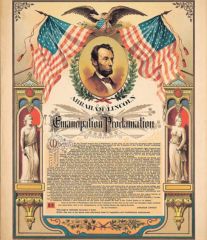
Emancipation Proclamation
|
This was a statement made by President Lincoln which said that all enslaved people in Confederate controlled areas would be freed in 90 days unless the South stopped fighting. It's goal was to keep France and England from recognizing the South as an independent country. It also gave the people in the North a new moral reason to fight - to free the slaves. It also encourage more African-Americans to sigh up - to liberate others.
|
|
|
Slavery was the leading cause of the Civil War
|
False!
|
|
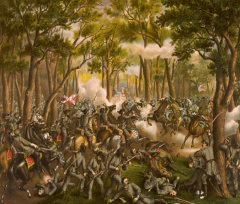
War of Attrition
|
General Grant realized that he would have to steadily grind the South down. The North would win this war because the Southern army could not replace their men that were being killed or wounded like the North could.
|
|

Appomattox
|
The courthouse In Virginia where General Lee surrendered on April 9, 1865 to General Grant which officially ended the Civil War
|
|

Battle of Antietam
|
General Lee decided to take his army north into Maryland where there was food and supplies. This changed the course of the war. It became known as the bloodies battle in US history. It also allowed Lincoln to issue the Emancipation Proclamation.
|
|
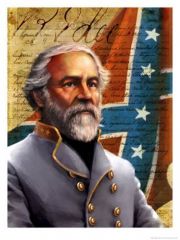
General Robert E. Lee
|
General for the Confederate (Southern) Army.
He served Jefferson Davis as a military adviser. He lead the Confederate Army into many battles. The turning point was the battle of Gettysburg. Lee surrendered at the Appomattox Court House in Virginia on April 9, 1865 because he knew he was outnumbered. |
|
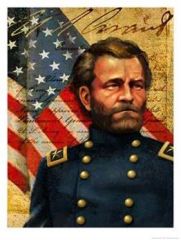
General Ulysses Grant
|
As a General for the North, he led many important battles. He then led his army to victory at the city of Vicksburg, a Confederate stronghold.
He became a famous war hero. |
|
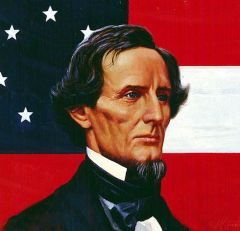
Jefferson Davis
|
He was the President of the Confederate States of America.
The Confederate States included all the Southern states that seceded |
|
|
What are two main causes of the Civil War?
|
The Mexican War gave more land to the U.S which broke the free/slave state balance. Both sides were willing to die for their cause.
Lincoln's Election was viewed as an abolitionist by the South. His plan included a ban on the expansion of slavery in the South. |
|
|
What are a few key advantages that the North had at the start of the Civil War?
|
Most of the money was in the North because of the factories that were being built.
Also, the North had more ships, trains, and road ways to travel and transport goods |
|
|
What are a few key advantages that the South had at the start of the Civil War?
|
The South had better Generals than the North.
Since most of the war was fought in the South, they had the advantage and could fight a defensive war because they knew the land better than the soldiers in the North. |
|
|
What was the major reason why most people in the North fought in the Civil war?
|
To keep the Union together and to keep a Strong Federal Government which protects the rights of all people.
|
|
|
What was the major reason why most people in the South fought in the Civil War?
|
They fought for their Independence and states' rights.
Also, to maintain their way of life and were will to die to protect it. |
|
|
What was "Bloody Kansas" and what did it show America?
|
Both the North and the South sent armed men in to "tilt" the election into their favor.
It showed that both sides were willing to fight and die to protect their way of life. |

